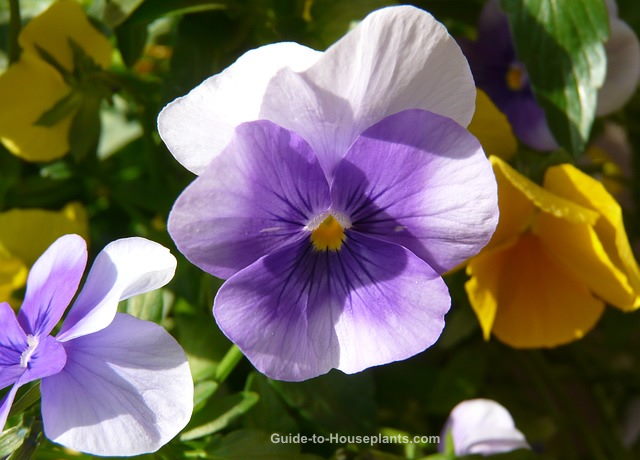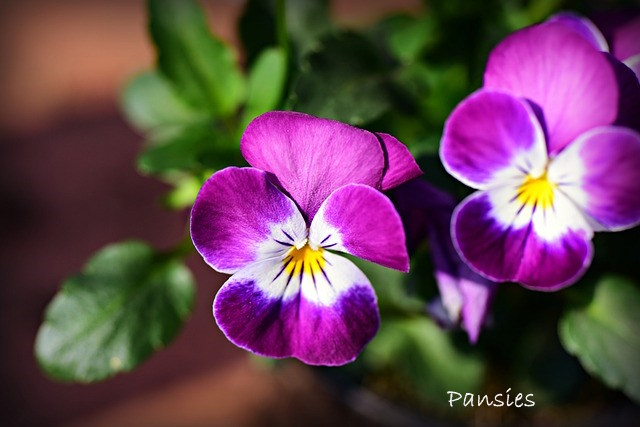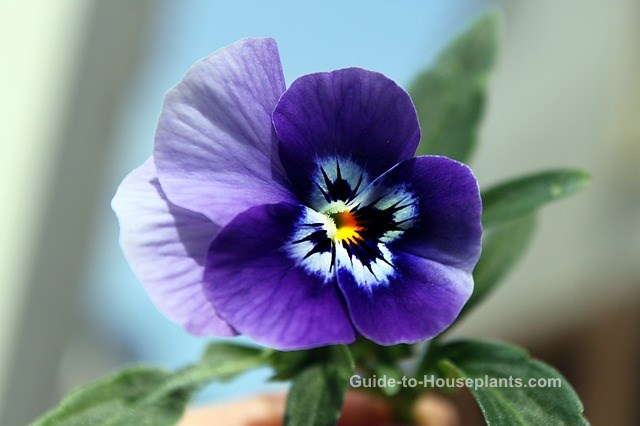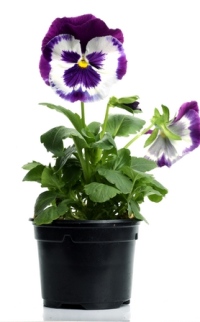Pansy Plants
Pansy plants are loved for their rich colors, velvety petals and easy care. Get tips for planting pansies, sowing seed, and find out how to get the most blooms.

Get to Know Pansies
Velvety flowers in a rich range of colors have made pansy plants long-time favorites.
Easy to grow, pansies are well-suited for flower beds and borders, and make good container plants -- alone or mixed with other types of flowers.
Those charming pansy "faces" are made up of 5 flat petals: 2 top, 2 side, and 1 lower petal. Typically, 2 or 3 colors are seen on each flower. The side and bottom petals often have contrasting blotches or veins radiating from the center of the bloom.
Known botanically as Viola spp., these brightly colored beauties have been bred extensively to offer bigger flowers -- and more of them -- than we've ever seen. It's no wonder pansy plants are more popular than ever.
Hybrids have also brought us a wide variety of colors and patterns to choose from, including purple, blue, violet-blue, yellow, red, pink and white. Some purple hues look almost black. And some newer hybrids have solid colors.
Packs of pansy flowers are easy to find in garden centers or online nurseries. Choose a plant with plenty of buds that are just beginning to open -- a sign of a young, vigorous plant.

Are pansies annuals or perennials?
Actually, pansy is a biennial, although it is usually bought in bloom, treated as an annual and tossed in the compost bin at the end of the season. You can keep it indoors to extend the bloom time.
Biennials have a 2-year life cycle. Grown from seed, they produce foliage the first year, then flower, set seed, and die the second year. Many newer pansy hybrids have been bred to bloom the first year.
Can pansies be grown indoors?
Yes! Low and compact, pansies are ideal for containers. Set pansies on your sunny windowsill and enjoy the view. Or plant them in hanging baskets at eye-level for all to admire.
Are pansies poisonous to dogs and cats?
No, according to the ASPCA, pansy plants are non-toxic, and safe to grow around pets.

How to Get the Most Blooms from Your Pansy Plants
Deadhead pansies. Pinch off flowers after they fade to promote more blooms. It's work, yes -- but you'll have a long growing season by deadheading spent flowers.
Got a reluctant bloomer? Lack of sunlight or too-high temperatures will make pansy plants fail to flower. Yes, pansies are a little wimpy. Shade them from direct sunlight during the hottest part of the day.
Feed it. Add a little fertilizer specially made for flowering plants to your watering can every couple weeks. Although pansies are prolific bloomers, fertilizer will give them more oomph.

Pansy Plants Care Tips
Origin: Hybrids with origins from England
Height: Up to 8 in (20 cm)
Light: Bright light to full sun. Pansies like it cool, so if you live where the summer is hot, keep your plants in partial shade.
Water: Keep the soil moist at all times, but don't over-water. Dry soil will cause flowers to fade quickly. If you're watering regularly and the plant wilts, root rot or stem rot is likely. Remember to use a pot with drainage holes to prevent soggy soil. These are the most common problems with this plant.
Humidity: Try to maintain 40-50% relative humidity around the plant. Place pot on a tray of wet pebbles to increase humidity. Don't mist them indoors because pansies are susceptible to powdery mildew.
Temperature: Cool to average room temperatures 60-75°F/16-24°C. If you grow them outdoors, they're winter hardy to USDA Zone 4. Pansies like cold better than heat, even tolerating a little frost.
Soil: Any good-quality, all-purpose potting mix.
Fertilizer: Feed every 2 weeks with a water-soluble fertilizer diluted at half-strength.
Propagation: Sow pansy seeds in early spring. Drop them on top of moist potting mix, then barely cover them with mix. Seeds will germinate at room temperature. Don't expose them to sunlight until they've sprouted.


